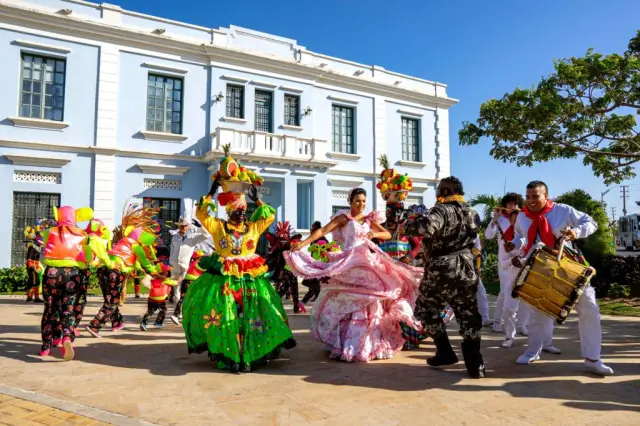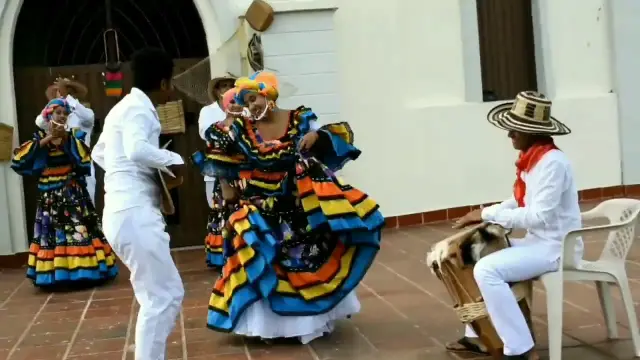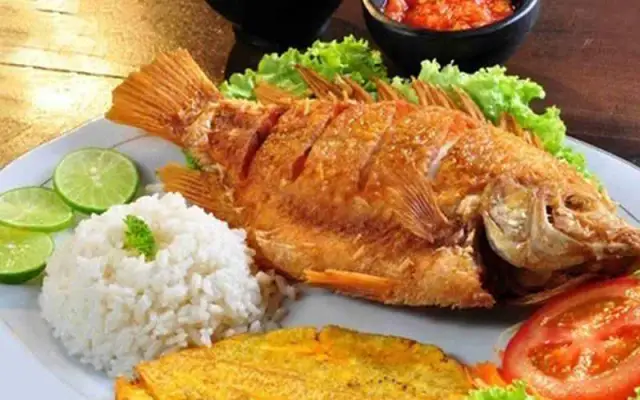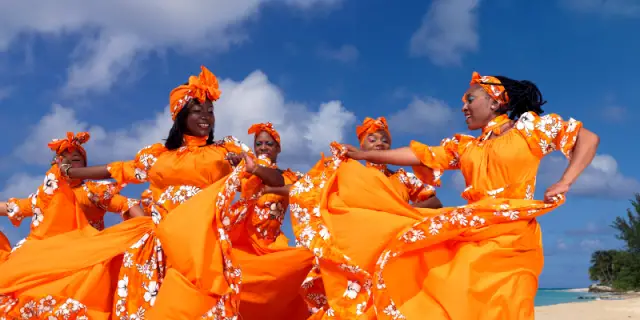Every June 28th , Colombia commemorates Colombian Caribbean Day , a special date dedicated to celebrating the diversity, history, and richness of this vibrant region of the country. This celebration goes far beyond a mere anniversary: it recognizes the colorful soul of the Caribbean, its multicultural roots, and the creativity expressed through its music, dances, flavors, and oral traditions.
The Colombian Caribbean is a land of contrasts where indigenous, African, and European heritage converge, creating a unique identity that has influenced the national culture. From the flavor of vallenato and the energy of cumbia to the intense aromas of a good rice with coconut, the Caribbean is a complete sensory experience. This article explores in depth the elements that make the Colombian Caribbean a cultural treasure worthy of being celebrated and preserved with pride every year.
Origin and meaning of Colombian Caribbean Day
Why is it celebrated on June 28th?
Colombian Caribbean Day was established to commemorate the anniversary of the founding of the Colombian Caribbean Research Institute (INCODI) in 1982. This institution, a pioneer in the study of Caribbean cultural expressions, had as its central objective to promote knowledge and respect for Caribbean identity within the national context.
Establishing this date was an act of recognition for a region that, historically marginalized in many spheres, has been fundamental to the development of Colombia's cultural heritage. June 28th is an invitation to reflect on the value of cultural diversity and the invaluable contribution of the Caribbean to the country.
A recognition of diversity
Celebrating this day also means honoring the resilience of the Afro-descendant, Indigenous, and mestizo communities that inhabit the region. These populations have preserved their customs in the face of centuries of exclusion and social transformation. Recognizing their contribution implies valuing their worldview, their community practices, their oral traditions, and their way of relating to nature and the land.

Coastal culture: identity and living expressions
Ethnic diversity and syncretism
The Colombian Caribbean is a melting pot where peoples with ancient histories and deep African heritage coexist. Indigenous communities such as the Wayuu , Kankuamo , Arhuaco , and Zenú , along with Afro-Colombian populations descended from slaves, have given rise to a culture rich in symbols, myths, languages, and artistic expressions. This fusion has created a unique worldview reflected in its festivals, religious beliefs, cuisine, and colonial architecture.
Literature, dance and popular art
The literary legacy of the Colombian Caribbean is found in authors like Gabriel García Márquez , whose magical realism mirrors the region. Traditional dances like mapalé , cumbia , porro , and fandango are true narratives in motion that tell stories of freedom, work, love, and celebration. Folk art, from painting to pottery, is another way to keep collective memory alive and project its identity.
Music from the Colombian Caribbean: sounds that tell stories
Emblematic rhythms
The Colombian Caribbean is a musical powerhouse that has influenced the sound of the country and the continent. Rhythms like vallenato , declared an Intangible Cultural Heritage of Humanity, narrate deep emotions and the experiences of the people. Cumbia , an ancient fusion of African drums, indigenous flutes, and European melodies, is danced in every corner of the Caribbean and beyond.
Other genres such as champeta , bullerengue , soca , and reggae are also part of the Caribbean sound DNA. These types of music not only liven up parties, but are also expressions of struggle, spirituality, and memory.

Coastal flavor: a cuisine that will make you fall in love
Typical dishes and recipes
The cuisine of the Colombian Caribbean is as varied as its people. Its dishes combine seafood, tropical ingredients, intense seasonings, and ancestral techniques passed down from generation to generation.
| Typical Dish | Key Ingredients | Cultural Commentary |
|---|---|---|
| Rice with coconut | Rice, coconut, sugar | Classic accompaniment to fish |
| Coastal Sancocho | Cassava, plantain, meat or fish | Traditional dish for family celebrations |
| Egg Arepa | Corn flour, egg, oil | Popular in Barranquilla and Cartagena |
| Fried mojarra | Fish, lemon, garlic | Typical food in coastal towns and beaches |
Each preparation has its own story. For example, sancocho isn't just food; it's a ritual of family and community unity.
Representative drinks and sweets
Coastal sweets also take center stage. Products like papaya candy , yam arequipe , buns , and coconut candy are part of celebrations and everyday life. Drinks like panela water with lemon , corn chicha , or tamarind juice refresh the soul and connect with the earth.
How Colombian Caribbean Day is celebrated
Caribbean Day is celebrated with enthusiasm in various cities and municipalities across the region. Celebrations include:
Folk festivals with music and dance performances in public squares.
Gastronomic inns offering traditional dishes and typical sweets.
Academic conferences and discussions organized by universities and cultural centers.
Processions and parades highlighting African and indigenous heritage with colorful costumes, drumming, and dancing.

Tourism and heritage of the Colombian Caribbean
Traveling through the Colombian Caribbean is a multi-sensory experience. The region offers destinations of great natural beauty and historical significance:
Cartagena , with its walled city, is a World Heritage Site.
Santa Marta provides access to Tayrona Park, one of the most biodiverse parks in the country.
Barranquilla , home of the largest Carnival in Colombia.
Palomino and Riohacha , ideal for enjoying pristine beaches and connecting with indigenous communities.
In addition, festivals like the National Cumbia Festival in El Banco (Magdalena) allow you to experience the musical and festive essence of the Caribbean up close.
The living essence of the Colombian Caribbean
Colombian Caribbean Day represents an opportunity to celebrate one of the most colorful, vibrant, and flavorful regions in the country. Its culture, built on resilience and joy, is a living heritage that should be promoted, disseminated, and valued nationally and internationally. Participating in this celebration is a way to deeply understand the soul of the Caribbean, its people, its landscapes, and its knowledge.
This June 28th, we invite you to proudly celebrate your coastal identity: dance, sing, savor, and share the best of the Colombian Caribbean.
FAQ: Frequently asked questions about Colombian Caribbean Day
What does it mean to be from the Colombian Caribbean?
Being Caribbean means living a joyful life, being part of a culture rich in oral traditions, music, colors, hospitality, and a deep connection with nature and community.
Where are the main events held?
The most notable events take place in cities such as Cartagena, Barranquilla, Santa Marta, Valledupar, and Riohacha, as well as festivities in coastal towns.
What is the traditional clothing of the Colombian Caribbean?
Light and colorful clothing, embroidered blouses, long skirts, vueltiaos hats, and scarves. At festivals, folkloric costumes reflect the colors of the Caribbean.
Is Caribbean Day a national holiday?
It's not an official holiday, but it has significant cultural and regional significance. Commemorative activities are held in many educational and cultural institutions.
